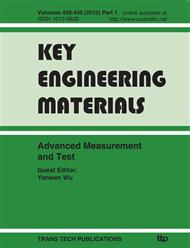p.422
p.429
p.434
p.440
p.445
p.451
p.457
p.463
p.469
Localization for a Rescue Robot Based on NDT Scan Matching
Abstract:
This paper studied the localization problem for a rescue robot based on laser scan matching and extended Kalman filtering (EKF). Scan matching method based on normal distribution transform (NDT) can avoid hard feature extraction problem by estimation of the probability distribution of laser scan data and localization can be achieved using correlation of the NDT. Based on NDT scan matching, the NDT-EKF algorithm is proposed , which realizes fast and precise localization in rescue environment by fusing odometery data and scan matching together. The NDT-EKF algorithm has been extensively tested and experimental results show its effectiveness and robustness.
Info:
Periodical:
Pages:
445-450
Citation:
Online since:
June 2010
Authors:
Price:
Сopyright:
© 2010 Trans Tech Publications Ltd. All Rights Reserved
Share:
Citation:


